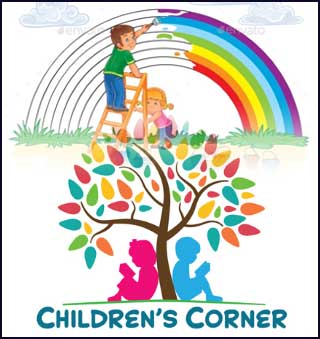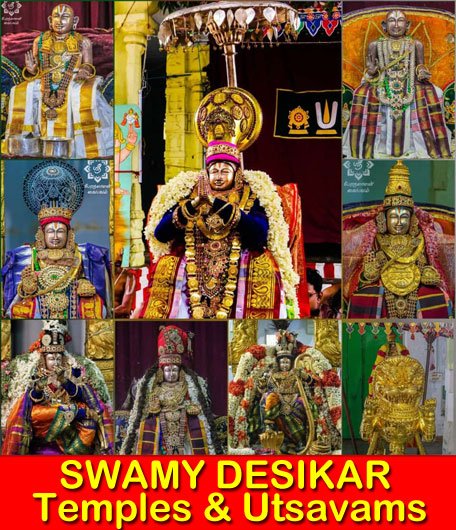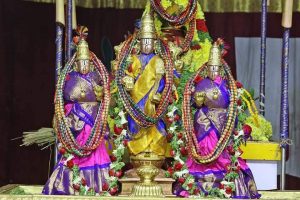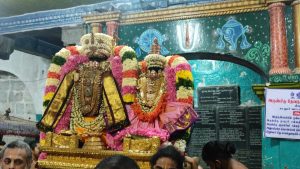(Dr.Sreeram Jaganathan, Arasanipalai)
By the word ‘creation’ it is understood that something is newly brought in to existence. That something did not exist before the process of creation and by the process of creation it was brought in to existence is what is the general worldly understanding. For most of the objects we see, that were created during our lifetime we can easily identify a cause and the factors of production, so to say, that brought that created entity to existence. Those that are created are nothing but fragments of the already existing universe and so the process of creation from other fragments of the universe does not bother us much. But what about the very Universe? Can we say it was created from some ‘other source’? Then from what source that ‘other source’ would have been created? This question of creation simply goes on backwards, unending. The theory of creation is so complex that even modern Science has also been going back and forth on their theories like the big-bang theory of creation.
The Indian schools of orthodox philosophy, called as darshanas, use the concept of ‘anaadi’ (without a beginning) to deal with this unending question on creation. They believe that the primordial insentient source of matter, whatever it may be conceived to be in each darshana, is uncreated. It has always been existing and it would always exist forever. Some darshanas do accept an ultimate creator in the form of a Paramaatmaa. But they also maintain that the Paramaatmaa did not create the primordial insentient matter nor the sentient beings, namely the jeevaatmaa-s as such. Then what exactly is creation (Srishti), what triggers creation and how do we understand the process of dissolution (pralaya)? Let us try to understand this from the perspective of the Visishtaadvaita darshana or Sreevaishnava sampradaaya which has had several illustrious Aacharyas like Naathamuni, Yaamunamuni, Bhagavad Raamaanuja and Swaami Vedaanta Desika, Manavaalamaamuni et al, and the twelve Aalwaars like Nammalwar. In this darshana, Shriman Naaraayana or Vishnu is believed to be the Paramaatmaa, who is also glorified as Sreenivaasa.
The Insentient matter (Achit) and the sentient beings (Chit) have always co-existed with the Paramaatmaa, who is the only independent being. The other two depend on the Paramaatmaa for their very existence and function, and do not have independence. The Paramaatmaa is the inner-dweller and controller (antaryaamee) of the other two. To put it simply the general matter and our physical bodies are made up of the achit tattva and the ‘knowing – acting – experiencing’ principles in the bodies that experience themselves, their bodies, the outside matter and their interactions with them are called the Jeevaatmaa-s. Their experiences are the usually expressed as “I”, “my body” “I know this pot in front of me” “I am happy” “I am sad” etc. The jeevaatmaas are given a controlled or limited independence (or freewill) for them to make a choice between following the shaastras (the Paramaatmaa’s command) for their own good or follow their own desires born out of ignorance, and eventually fall from grace. This limited freewill theory is a corollary to the karma theory. Now, what is creation? Well, let us understand dissolution (pralaya) first.
When the Jeevaatmaa-s collectively become greedy completely and continue to exist to merely pursue their own desires out of ignorance, with no regard for the sastras, there arises total chaos in the universe, and its sustenance becomes no longer possible. Now it is time for a break! Then, following the universal order, the components of the Universe breakdown and get absorbed in to that part from where they evolved. For example, ‘water tattva’ would get absorbed in to ‘fire tattva’ as originally water evolved from fire. In this manner all the previously evolved components of the primordial matter get absorbed in to their respective causes and ultimately all the intermediate causes get absorbed in to the ultimate cause, the primordial matter itself. The jeevaatmaa-s would no longer have any gross physical bodies and they would be reduced to bare subtle forms and get attached to the primordial matter without any of the previously stated experiences, as they don’t have a body with senses. It may be thought that this state is in one way good for the jeevatmaa-s as there would be no suffering as there would no experience at all of any sort!
Can this state continue to exist like this? What would trigger the next cycle of creation? What would be the real reason? Let us look at this verse from a beautiful Stotra-kavya called Daya shatakam, a stuti with more than a hundred verses on the quality of compassion of Bhagavaan Sreenivaasa of the seven hills (Tirumala) by Swami Vedaanta Desika. The Acharya Vedaanta Desika personifies Srinivasa’s compassion (the guna called dayaa) as one of his divine consorts and sings her praise very beautifully in this wonderful poetry. The verse that explains the reason for creation is – “अचिदविशिष्टान् प्रलये जन्तूनवलोक्य जातनिर्वेदा । करणकळेबरयोगं वितरसि वृषशैलनाथकरुणे त्वम् ।। “Hey Daya devi! consort of the Vrushashaila naatha [Bhagavaan Srinivasa], you, during pralaya, while looking at the jeevaatmaa-s who have become almost undifferentiable from matter [owing to their lack of experience of any sort as they are devoid of bodies with senses during pralaya], out of distress, prompt Srinivasa to set the process of creation rolling so that the jeevaatmaa-s would get associated again with bodies with sense organs [so that they get an opportunity once again to gain the jnana of the Paramatma, the means to attain Him and thus put an end to suffering of any form and enjoy the Supreme bliss that arises from serving Him]”.
To summarise, it is the dayaa (compassion) of the Paramatma, Bhagavaan Srinivasa of Tirumala, that becomes the reason for creation after Pralaya, which is to bring the evolved primordial matter and jeevatmas together for a meaningful combination, so that the jeevatmas would get associated with a body with sense organs, be born as a human eventually, get an opportunity to experience and know, among several worldly things, about the Paramatma also through the compassion of a Sadaacharya. In this manner they get an opportunity to know themselves, that is their true nature of being subservient to the Paramatma, and to pursue the desire to perform nitya-anagha-kainkaryam (eternal flawless service) to His divine feet. Then the Jeevatmas, with the guidance of their Acharyas, would perform Prapatti (Surrender) at His divine feet and attain His eternal abode (Srivaikuntha) staying untouched by matter and thus not experiencing pain of any sort.








